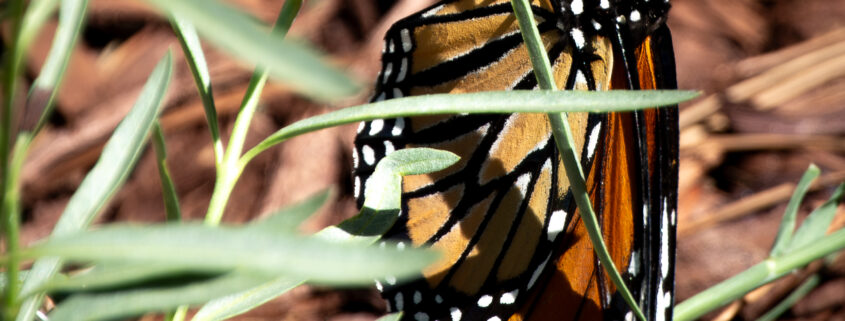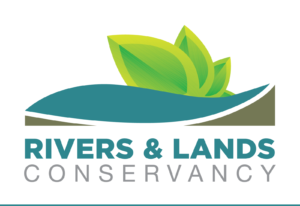
By Amy Tims
Conserving overwintering habitat is crucial for native wildlife.
During the cold months of winter, I love to start my morning with a hot cup of coffee and a long look at my yard, taking in the activity and features that are unique to the season. The cedar waxwings scurry around the branches of the toyon tree. The desert cottontails hop through the deerweed and feast on the weedy microgreens popping up after the rain. Even the fallen leaves have insects nesting underneath. Though small, my backyard is home to many.
Evidence of our winterizing landscape isn’t just confined to home gardens. Dormant and wintering plants can be found anywhere there are natural open spaces. On a hike, look no further than the dry foliage on the ground providing cover for swallowtails, great spangled fritillary and woolly bear caterpillars. You may even spot tiny cavities or rodent burrows in the ground where native bees like bumble bees and sweat bees tunnel into their nests.
Many insects and animals overwinter to wait out low chances of survival due to cold temperatures, snow and limited food supply. This is when black bears hibernate in their dens, Anna’s hummingbirds go into torpor and monarch butterflies migrate south or to the coast to overwinter.
Even some perennial plants like the narrow-leaved milkweed are known to overwinter by ceasing vegetative growth. Otherwise known as dormancy, plants at this time are dying back to the root for the winter while acclimating to reduced light and water availability. Dormancy also eliminates pathogens that could flourish while the plant is at its weakest. If you love your monarch butterflies, you should plant native milkweed that goes dormant instead tropical milkweed which will host a growing population of Ophryocystis elektroscirrha (OE) during the winter. This common protozoan parasite kills or deforms monarchs in their pupal state.
Starting your own overwintering habitat can be as easy as letting it “bee.” Leaving behind any dead hollow plant stems provides a hotel for native bees. Also, “leaf” your leaves alone as they create habitat for many ground-dwelling insects and add nutrients back to your soil. If you must, you can rake them up to remove them in spring. Or rake up portions, leaving some bare ground available for ground nesting bees. Other ways of adding habitat in your yard are to incorporate a consistent water feature and creating brush, log and rock piles. Take it a step further and re-establish California Native plants around your home if you haven’t already! Many regional native plants are easy to grow because they’re adapted to our specific climate.
Overwintering challenges the conventional ideas of how we should garden and not everyone is a fan. Unfortunately, typical gardening practices minimize the presence of wildlife around our homes by removing the habitat value. We’ve been taught to rake our leaves, prune our plants and landscape with exotic evergreen and ever-flowering species that may have no benefit to our native wildlife. Our suffering wildlife is begging you to rethink gardening!
Overwintering habitat is essential to California. Conserving open spaces through the re-establishment of native plants in overwintering habitat is an essential step to Rivers & Lands Conservancy’s efforts. Some local plant species we include in our plantings include elderberry, rose, blackberry, sumac and California sunflowers. In fact, our next volunteer event will be an oak restoration planting on January 13th, 2024. You can find out more and sign up to join us by visiting our website.
Conserving these spaces helps the community as a whole – not only the ecological communities of flora and fauna. Taking care of the land brings us joy in socializing with others outdoors and offers us peace from the hustle and bustle of suburban life.
Next time you are getting ready to do some yard work in the winter, put the rake away and “Leave it bee!” Take a moment to appreciate the overwintering habitat you may have in your yard. You won’t appreciate it alone. The local insects and wildlife will certainly join you.
Amy Tims is a Land Steward with Rivers & Lands Conservancy and has a B.S. in Conservation Biology from UC Davis.
Rivers & Lands Conservancy connects our community to natural, wild, and open spaces of Southern California through land conservation, stewardship, and education.





